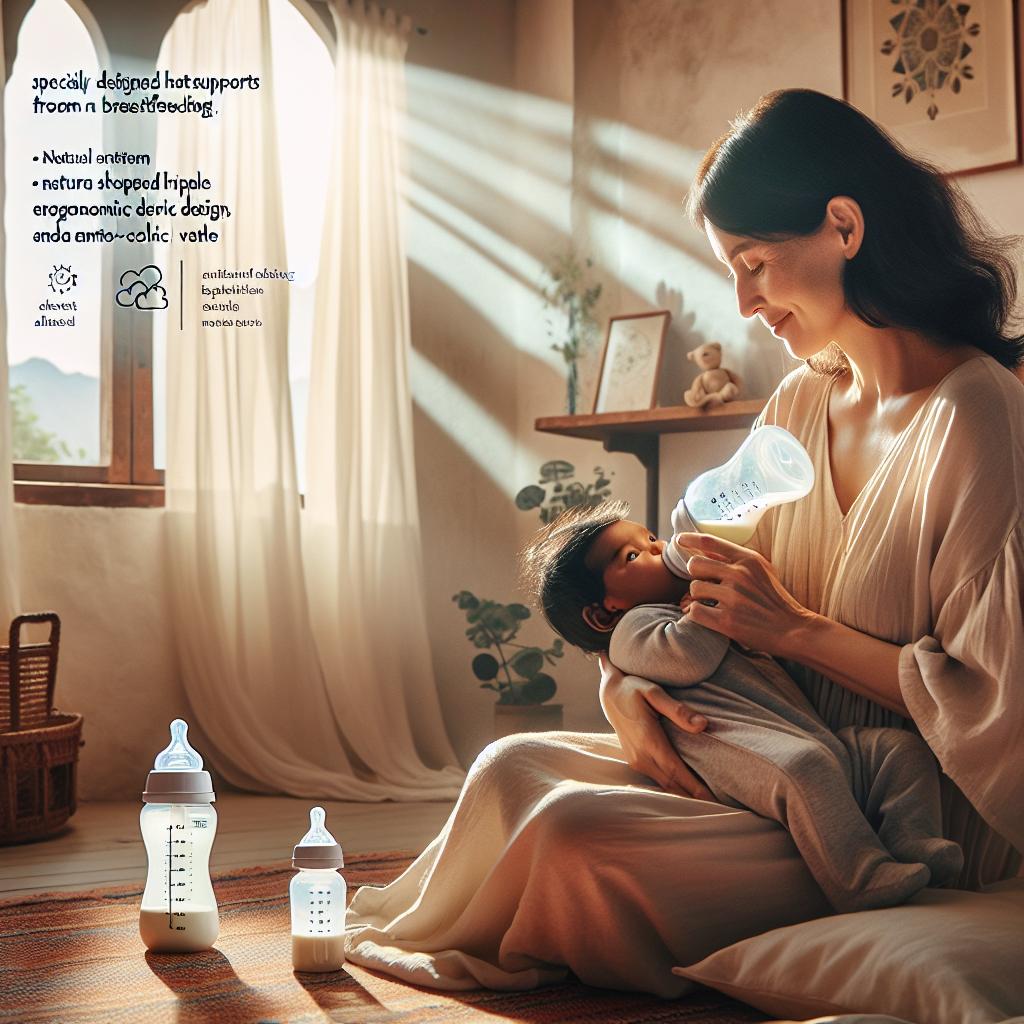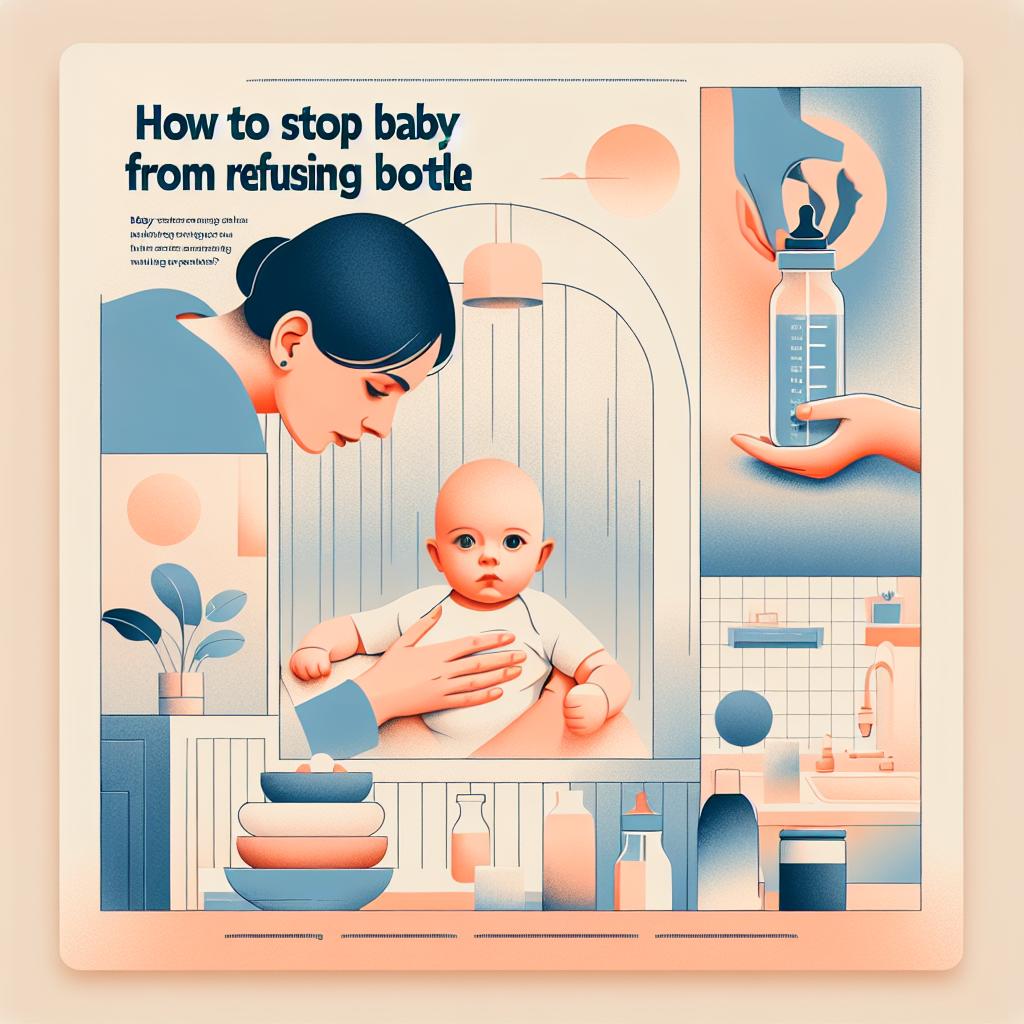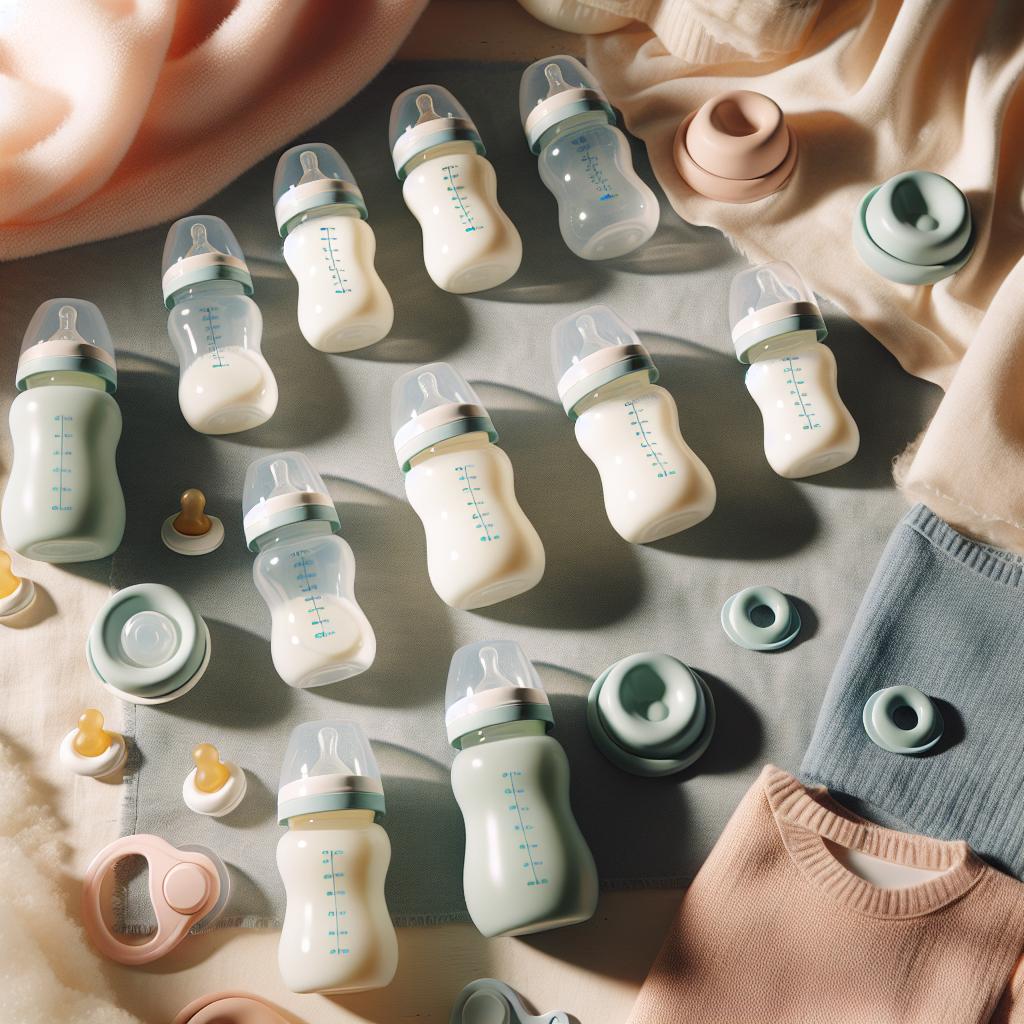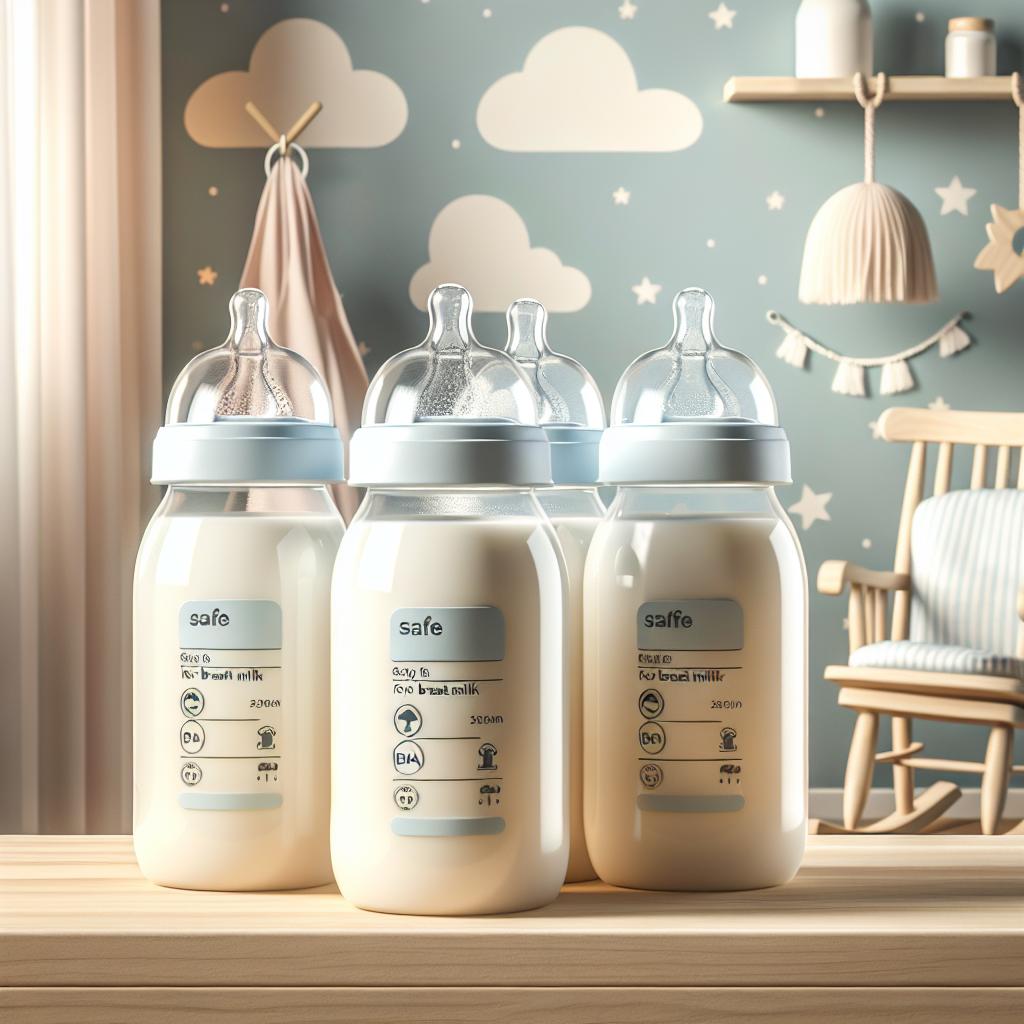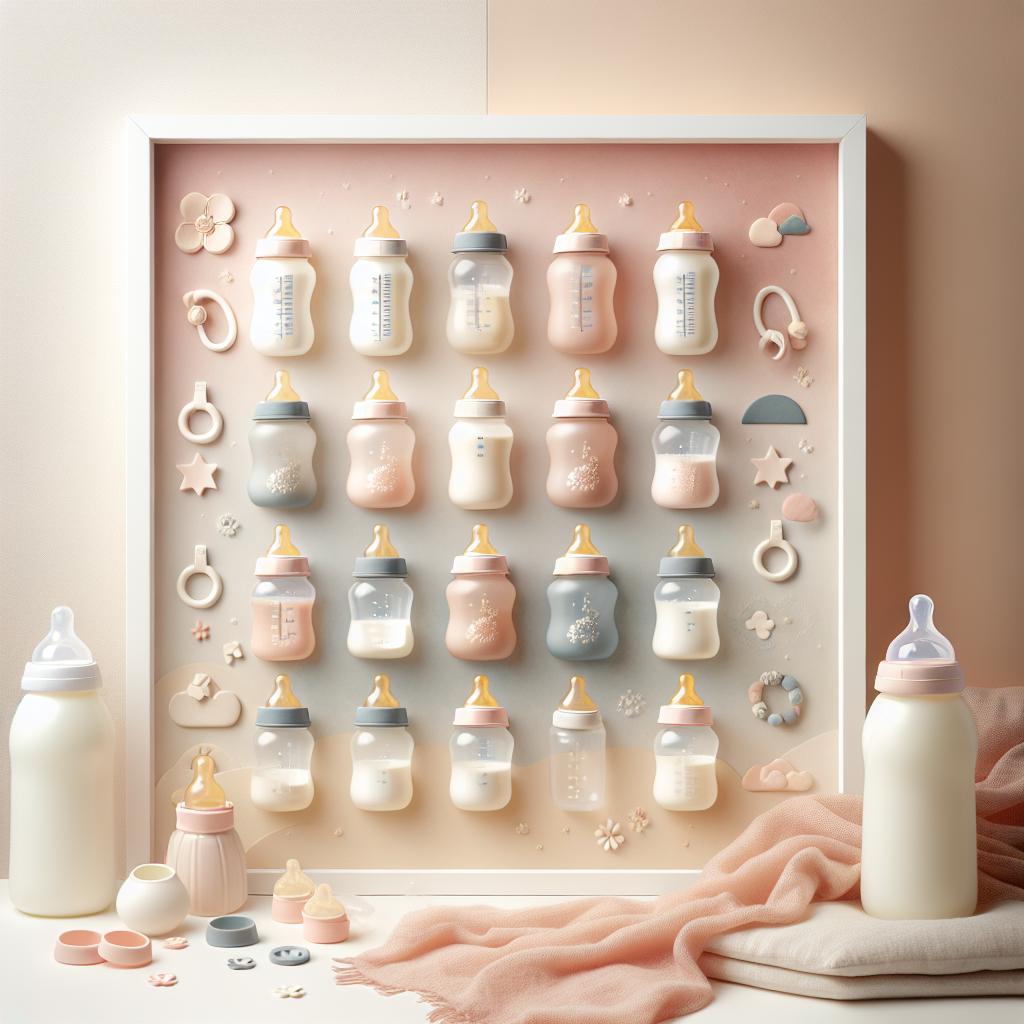Choosing the Best Bottle for a Breastfed Baby
Are you a new parent transitioning your breastfed baby to bottle-feeding? It can indeed be quite a challenge. Not every bottle will be suitable for your little one, and some babies may even refuse the bottle altogether.
To help you navigate this journey, we have compiled some information on how you can find the best breastfed baby’s bottle and tips to make this transition smoother.
What to Look for in a Bottle for Breastfed Infant
First, let’s focus on what features to look for when choosing a bottle for your breastfed infant:
- Shape of the Bottle: An infant bottle’s shape should mimic the breast to ensure a smooth transition.
- Nipple Design: For a breastfed baby, opt for a bottle with a wide, flat nipple design as it closely resembles the shape of a mother’s nipple.
- Flow Control: A slow-flow nipple is recommended as it replicates the pace of breastfeeding, forcing the baby to work for his meal, as he would at the breast.
- Material: Pick materials that are BPA-free, durable, and easy to clean, like glass or stainless steel.
Mastering the Art of Bottle-Feeding a Breastfed Baby
Having the right bottle is half the battle. The next step is to understand how to bottle-feed your breastfed baby.
Here are some tips from experts that work for most breastfed babies:
- Timing is Vital: Choosing the right time is essential. A good time can be when the infant is not too hungry nor too full.
- Position Correctly: Make sure to position your baby upright during feeding. It can help manage the flow and prevent choking.
- Touch and Pause : Touch the nipple to the baby’s lips and wait for them to open their mouth wide before inserting the bottle.
- Switch Sides : Switch sides midway through a feed to mirror breastfeeding. It can also help prevent side preference
For more specific advice, check out this detailed guide from the NHS on how to combine breast and bottle feeding.
Managing Baby’s Resistance to the Bottle
Some infants may resist the bottle initially. This resistance is mostly because the bottle offers a different feeding experience than breastfeeding.
If your baby refuses the bottle, do not despair. Check out this useful guide on how to stop a baby from refusing the bottle. It offers practical tips that can come in handy in your feeding journey.
Proper Bottle Preparation and Storage
Lastly, it’s also essential to learn about proper preparation and storage of infant formula. Correct formula preparation can prevent unnecessary illnesses and ensure optimal nutrition for your baby.
For comprehensive guidance, refer to this resource by the CDC on infant formula preparation and storage.
Remember, choosing the best bottle for a breastfed baby and understanding how to feed your infant correctly can make a significant difference. It can ensure a smooth transition from breast to bottle, and help your baby continue to thrive and develop.
Benefits of Bottle-Feeding for Breastfed Baby
Bottle-feeding a breastfed baby may seem daunting, but it does have several benefits:
- Freedoms: It provides the mother with more freedom and less feeding responsibility solely on her.
- Bonding opportunity: Bottle-feeding allows other family members to contribute to feeding the baby, unfolding a unique opportunity for them to bond with the child.
- Feed monitoring: With bottle feeding, it’s easier to monitor how much milk your baby is getting.
Refer to the KidsHealth article for a deeper understanding of the pros and cons of breastfeeding and bottle-feeding.
Introducing a Bottle to a Breastfed Baby
Introducing the bottle to your breastfed child requires patience and a gradual approach. Here are some practical tips that can help:
- Pacing the Introduction: Gradual introduction helps the baby get acclimatized to the new feeding method without feeling overwhelmed.
- Get Someone Else to Feed: It can be helpful if someone other than the mother introduces the bottle. The baby associates the mother with breastfeeding and may refuse the bottle with her.
- Keep Mother’s Scent: Wrapping the bottle in a piece of cloth that smells like the mother may soothe the baby and help acceptance of the bottle.
For a detailed guide on introducing the bottle, the La Leche League International provides an excellent resource.
Best Bottles for Breastfed Babies
Identifying the right bottle goes a long way in making the transition smooth. Here are some highly recommended bottles for breastfed infants:
- Lansinoh mOmma Breastmilk Bottle: This bottle was created with the breastfed baby in mind.
- Comotomo Natural-Feel Baby Bottle: It is known for its wide nipple base and skin-like feel, closely mimicking the breastfeeding experience for the baby.
- Dr. Brown’s Natural Flow Bottles: These bottles are clinically proven to reduce colic, and many breastfeeding mothers swear by them.
Remember, it’s not one-size-fits-all. The right bottle for other babies may not be the right one for your baby. It’s always a good idea to buy a few different brands initially and observe which one your little one prefers.
Expert Advice and Additional Resources
Getting advice from lactation experts and consulting reliable resources can help make this transition smooth. The NCT provides ten practical bottle-feeding tips for breastfed babies. Similarly, the La Leche League International is another excellent source for information on breastfeeding and bottle-feeding.
To conclude, every baby is unique, and what works for one may not work for another. With patience, understanding, and the right approach, you can successfully introduce a bottle to your breastfed baby.
Remember, ‘Parenting is a journey and not a destination.’ Enjoy every moment of it!
